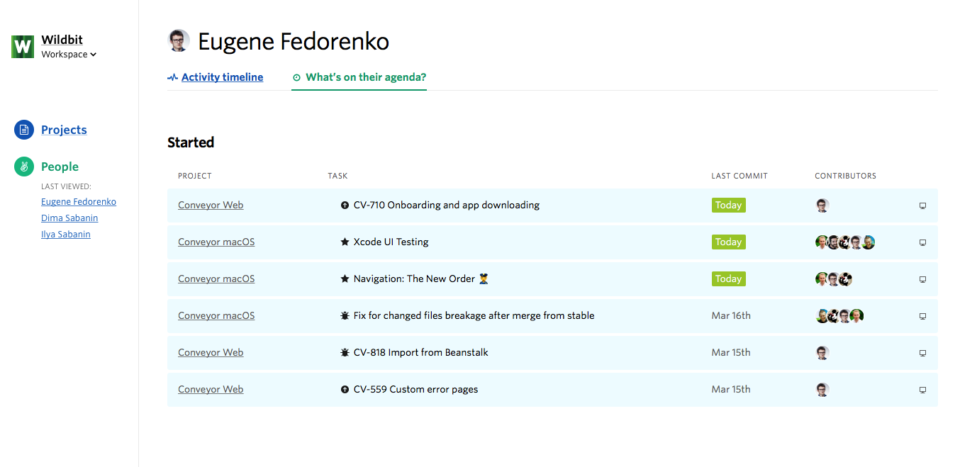After much consideration and many conversations, we've decided to shut down Conveyor. We'll begin the process on September 1, 2020. Thank you again to all the people who shared their feedback or time with us!

As we’ve been sharing, our focus for Conveyor is to reduce the friction of a team’s development workflow and help you focus on writing code. To provide a workflow that you use rather than one you have to manage.
So, how can Conveyor help you and your team?
The pain points
Even a team of 3–4 people have to work at managing their processes. It requires less work and thought than larger teams, but it still takes your time and energy. Once a team grows beyond 10 people, this becomes even more true.
As we talked to development teams of different sizes, we heard a consistent theme. People in leadership positions have some tasks that make their job a little harder.
These activities can include:
- understanding or measuring the current progress of all projects (and the communication required to gain that understanding)
- creating status updates to share with your team and clients
- onboarding new hires to your development team
- ensuring team members are following your process(es)
- finding time to write code
As a team grows, the people who were the primary creators start to spend more of their time managing the process than writing code. For some people, that’s a natural progression. Others wish they had more time to write code themselves but feel trapped by everything that’s going on.
How Conveyor can help
As a small team running 3 products (with 1 on the way), we experience this pain ourselves. With this in mind, we’re building Conveyor to help with these specific pains.
Automatic insight for the entire team. One aspect of Conveyor is that all team members can make use of it. Developers can write code and make progress on projects, of course. But project managers and team leaders can log in and get a clear picture of what’s happening at any time.
This does not require the tedium of requesting status updates or tracking time — it’s automagic. Instead, Conveyor gives this insight through the activity in your project.
Want to know if your team is making progress on features or spending all their time on bug fixes? You can log on to see the most recent work on any given project. Curious about how much work is going into a new feature? Log in and see how many commits each task includes, the start & finish dates, as well as all the conversation related to the task.
Need to know if a specific team member has a full plate? Conveyor knows.

And Conveyor helps transparent companies keep their clients up to speed. You can create accounts for them and let them see the progress of their projects as it happens.
Reduce the onboarding time for new team members. Anyone in charge of hiring understands how time-consuming it can be. And once you bring on a new team member, getting them up to speed to be an effective contributor takes a lot of time.
Conveyor can help in this regard by providing a default process. When you add a developer to your team, they can contribute to projects immediately. You don't have to spend time explaining your branching process or your preferred Git workflow. Assign them a task and let them get started.
Remove the need for babysitting. Keeping tabs on junior team members and new hires is a pain for senior developers. Making sure people are not hogging commits. Reminding them to pull regularly from master. Ensuring they merge into the correct environment branches. These are some of the types of activities senior team members find themselves doing. Conveyor's built in workflow means you no longer have to do this type of thing.
And most every team has the Git expert to call on when things get messy. Someone adds 5GB worth of assets to a repo, or merges an experimental branch full of bugs into master. Now you need an arcane mix of Git commands to clean things up. Or worse, you need to delete your tracked history from Git (which goes against the very purpose of version control).
Conveyor helps by providing a consistent workflow that removes the lower level details of Git and prevents some of the mistakes people make.
Again, our focus with Conveyor is to allow you to focus on the things that allow you to grow your business. That means shipping projects and helping your clients meet their own business goals. No one is getting paid to craft the perfect workflow: you only need it to be as effective as possible.
It’s our goal for Conveyor to handle that so you don’t have to.
Curious about anything we mention here? Let us know on Twitter — we'd love to hear what you think!
Want to get early access to Conveyor? Sign up to join the beta list

